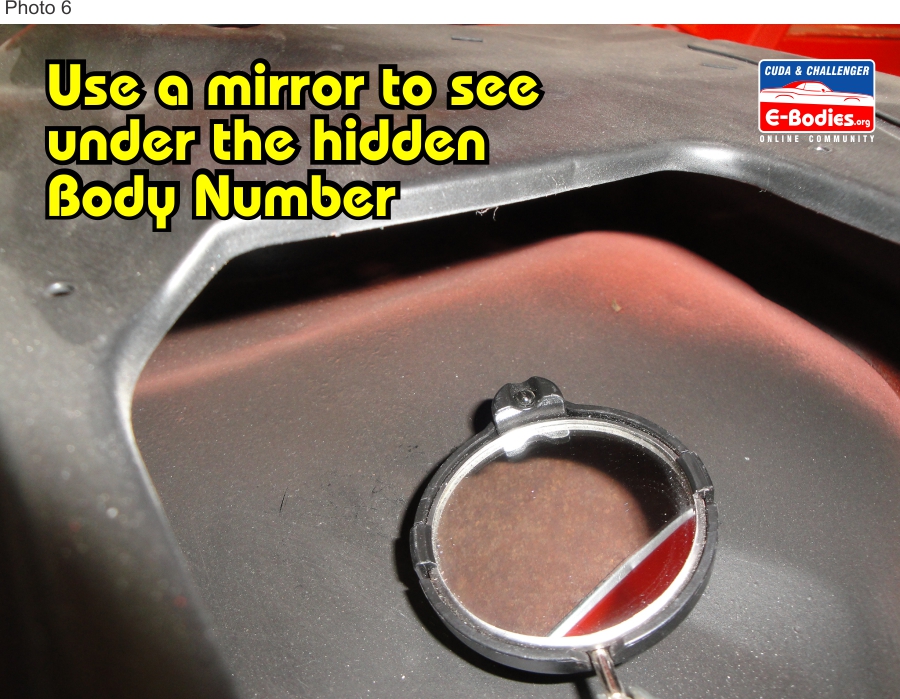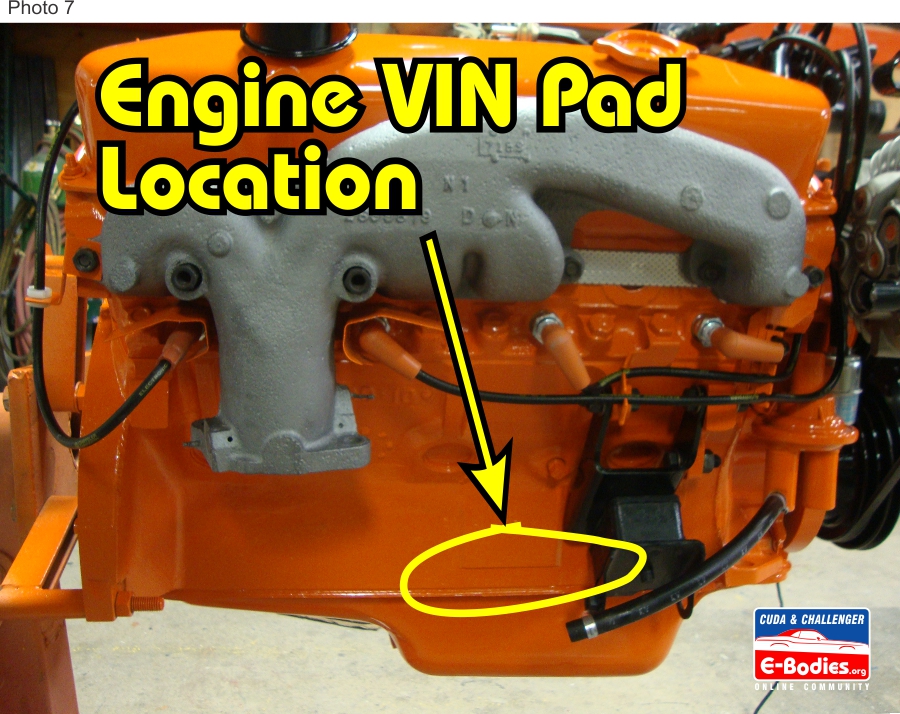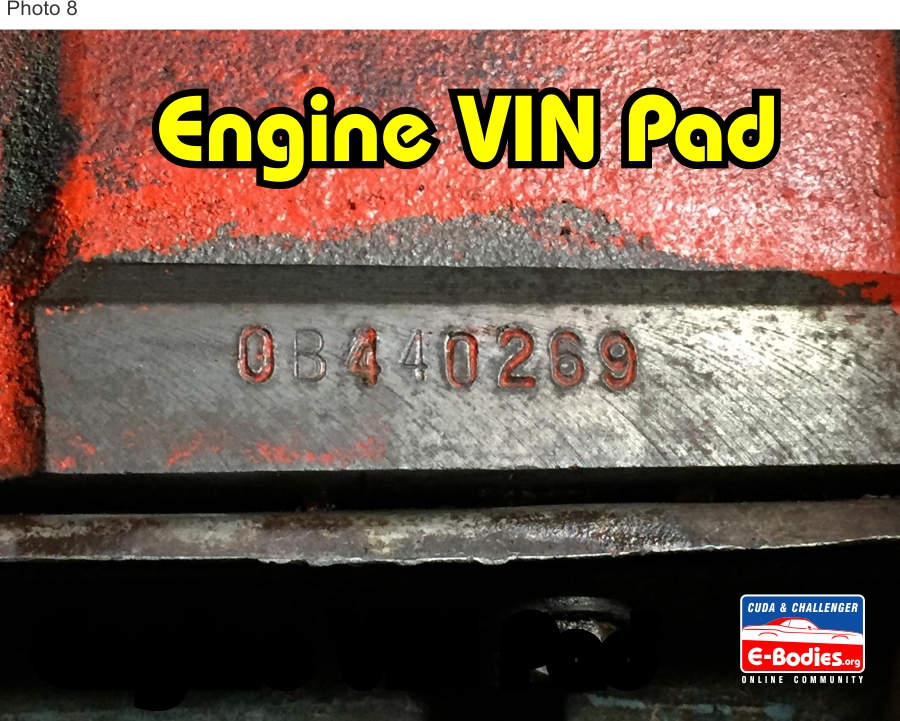On really rusty cars that need to have the cowl and or radiator support metal replaced it would be nice to retain the Body Numbers, right? This is where you need to check with your local law enforcement or DMV. Without giving legal advice, it might be worth your time to check and see what can legally be done in your state to preserve partial VINs. If you want to check to see if the hidden Body VINs have been changed (i.e. re-bodied) there are a couple ways to check. The first and easiest way is remove the screen cover on the cowl to gain access under the cowl Body VIN. Then take a mirror with a flashlight and look at the backside of the cowl. You’re looking for any welds or signs that the Body Numbers have been cut out and replaced. See photo 6

An even more sophisticated way to check this is to use the same magnaflux machine used to check for cracks on engine blocks. Under the guidance of an experienced technician, use this machine to see if the metal around the Body Numbers has been hardened by the heat of a welder. This method would be reserved for situations where you have a reason to believe the car has been re-bodied.
#5 ENGINE: When most people ask if a Muscle Car is “Numbers Matching” they are asking if the Engine and Transmission are the original components that came in the car from the factory. Fortunately for E-Body fans, the Engine & Transmission stampings make it easy to find the answer to that commonly asked question. Dodge and Plymouth started stamping VINs on engines and transmissions in 1968 in anticipation of government regulations making it a requirement on all new cars. Back then, they lacked a designated VIN pad so they were forced to hand stamp each number on the top of the bell housing area (near the rear of the engine). It was hard to read and difficult to see when the engine was installed the car. So in 1969 they cast a raised VIN pad area to the passenger sides of both the Engine and Transmission, which is where you will find the VIN stamp for all E-Bodies. Much like the hidden Body VINs, the Engine and Trans only have the last 8 characters of the VIN. They were stamped at the same time with the same tool. So the Engine and Transmission VIN numbers should match each other in font size, spacing and alignment. Although, one big difference exists between the Body Number VINs and the Engine and Transmission VINs. Recall, if you will, that the Body Numbers (Cowl and Radiator) have the first two characters reversed (E0 vs. 0E)? Well, they are not reversed on the Engine and Transmission. They are in the exact same order as the Dash VIN. Start by looking for the Engine VIN on the raised pad on the passenger side of the engine just above the oil pan rail. See Photo 7

If the engine is still installed in the vehicle you might need to safely get under the car to easily see it. Another method is to try using a mirror and flashlight to see it without having to get under the car. And if the pad doesn’t have too many layers of paint you may be able to see the mill markings from the machine which cut the pad. If the engine has a lot of grease or has been repainted, the mill marks are hard to see. In Photo 8 you’ll notice the mill marks.

While inspecting the numbers on the Engine VIN pad, pay close attention to the spacing. The spacing should be even and consistent between the characters. Also look to see if the Pad itself has been re-milled, sanded smooth or altered in attempt to “re-stamp” the block. It’s unfortunate but re-stampings do happen and fool many into thinking the engine is original and therefore, fetch a higher price. If you have a concern about the block possibly being re-stamped, feel free to ask for help on the E-Bodies.org Forum. Many passionate E-Body fans have inspected hundreds of stampings and can offer our experienced opinion. Plus there are many other places on a block that have specific date codes that can help determine if it’s been re-stamped.